Indicator No.50
No.50 appears at the bottom of the Ace of Spades and the cards have corner indices and miniature suit symbols in the corners.
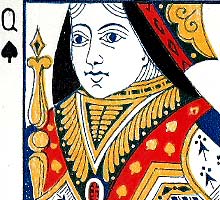
Indicators, patented in 1883, soon became the standard for use in all Dougherty decks. The first deck in this brand was issued in 1894. They proved to be one of Dougherty's biggest sellers for over 35 years. Several new brands were created using the Indicator Ace of Spades with merely a change of name on the box, also in narrower sized decks for Bridge and Whist, and with various types of Joker. In the example shown here, No.50 appears at the bottom of the Ace of Spades and the cards have corner indices and miniature suit symbols in the corners.

Above: A. Dougherty’s 'Indicator No.50' playing cards, c.1896. The back design appears to be inspired by the work of the English card back designer, Owen Jones. Dougherty is reckoned to have copied back designs of Owen Jones and others. However, an almost identical design was published by as Charles Bartlet some years earlier. Images courtesy Rod Starling.
See: Montgomery Ward & Co Catalogue Spring & Summer 1895►

Above: slightly later edition of Dougherty’s 'Indicator No.50' with different indices and tinted faces. Images courtesy Matt Probert.

REFERENCES
Dawson, Tom & Judy: The Hochman Encyclopedia of American Playing Cards, U.S. Games Systems Inc., 2000
Hargrave, Catherine Perry: A History of Playing Cards and a Bibliography of Cards and Gaming, Dover Publications, New York, 1966
By Rod Starling (1936-2023)
United States • Member since January 09, 2013
Rod Starling was one of the founding members of the 52 Plus Joker card collectors club. He authored many articles for the club's quarterly newsletter, Clear the Decks. His collection encompasses both foreign and American decks. Rod also authored a book titled The Art and Pleasures of Playing Cards.

Related Articles
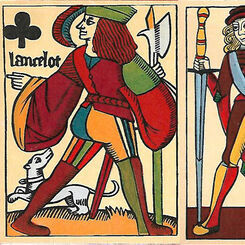
A Look Back with Hope for the Future
“A Look Back with Hope for the Future” by Rod Starling
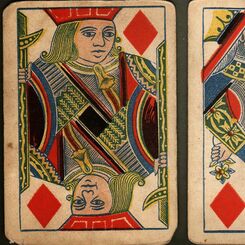
42: Andrew Dougherty
Andrew Dougherty was one of the biggest American card-makers in the 19th century
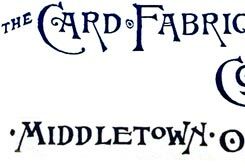
Card Fabrique Company
Card Fabrique Company had connections with several other manufacturers and their complete history is...
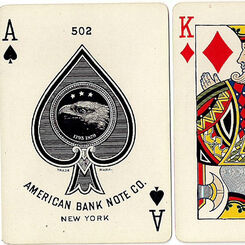
American Bank Note Company
The American Bank Note Company was a long-established firm producing national currency, finely engra...
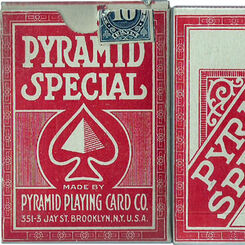
Pyramid P.C.C.
The company introduced a number of standard brands until it was absorbed into U.S.P.C.C. and its aff...

Tigers No.101
In 1881 Russell, Morgan & Company commenced playing card production by issuing six grades of cards w...
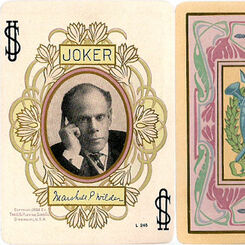
Tales from the Stage
"Tales from the Stage" - an article about theatrical playing cards by Rod Starling

Stage Playing Cards, 1908
This beautiful deck features an oval half-tone photo of a theatre star on each card, many of them le...
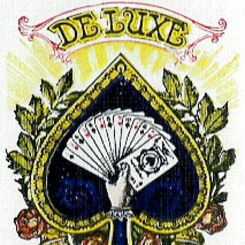
De Luxe No.142
A wide size version of De Luxe No.142 had been published in c.1920, with a similar Ace of Spades and...
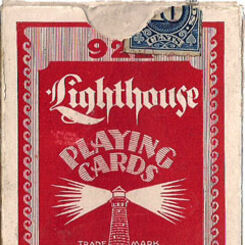
Lighthouse No.922
“Lighthouse No.922” playing cards were introduced in c.1920.
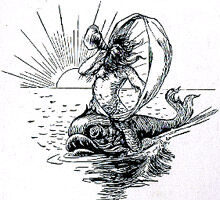
Triton No.42
There have been at least three different versions of the Triton deck, with different Jokers, differe...
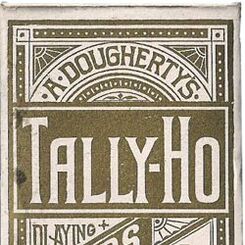
Tally-Ho
The earliest Ace of Spades had the Centre Street address and the Jolly Joker was used until the “Tal...

Triplicate No.18
Dougherty first secured a patent for “Triplicates” in 1876, a novel type of indices with a miniature...
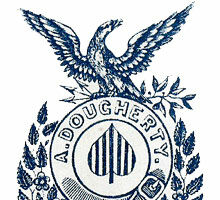
Andrew Dougherty c.1850
The idiosyncratic courts used in this deck were used by several other U.S. manufacturers, including ...
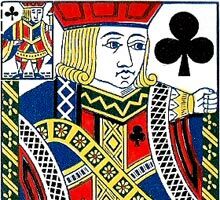
Ivorette
Dougherty was at the forefront of innovation, adding Best Bowers and then Jokers, rounded corners an...
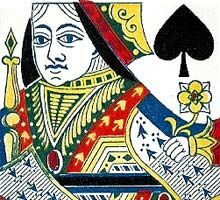
Cruiser Playing Cards
Dougherty's ‘Cruiser No.96’, first published c.1897, was dedicated to the U.S. Navy..
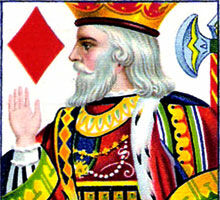
Norwood #85, c.1909
The deck features a colourful Ace of Spades and Joker, decorated Aces, unique courts and two beautif...

13: Some North American Cards
I deal with some of the US makers in more detail on other pages, but here is a brief introduction.
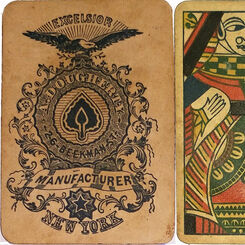
Excelsior
Excelsior by A. Dougherty, c.1870.
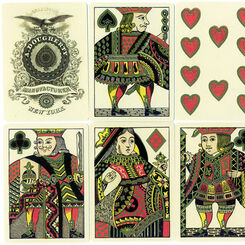
Illuminated Playing Cards, c.1865
Facsimile edition of Andrew Dougherty's Illuminated deck, c.1865, published by U.S. Games Systems, I...
Most Popular
Our top articles from the past 60 days






















